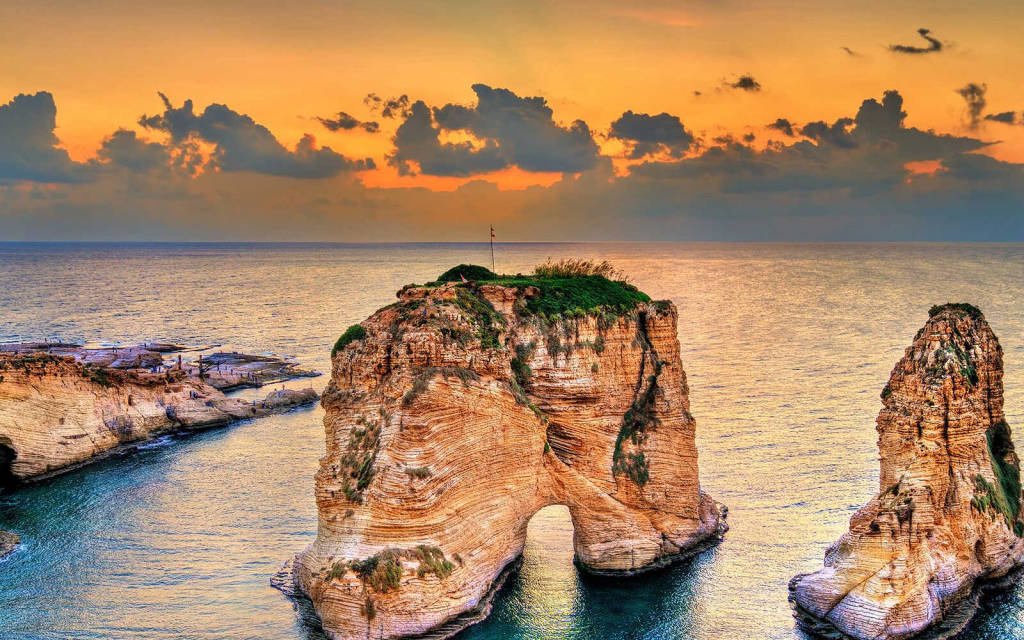Raouche Rock, also known as Pigeon Rocks, is an iconic natural landmark situated in the Mediterranean Sea, just off the coast of Beirut, Lebanon. This breathtaking formation is a symbol of the city and a beloved attraction for tourists and locals alike. Raouche Rock holds both geological and cultural significance, making it an essential part of Beirut's landscape.
Here are some key aspects and highlights of Raouche Rock:
Raouche Rock is a stunning example of a geological marvel. These two massive rock formations stand as sentinels, with one reaching a height of 60 meters, and the other standing at 40 meters. These towering rocks are composed of porous limestone and marl, shaped by centuries of natural erosion, weathering, and sea waves. Their striking appearance against the backdrop of the Mediterranean Sea has made them an awe-inspiring sight.
The rock is deeply intertwined with Beirut's cultural heritage. The site has been the subject of numerous artistic works, photographs, and postcards that depict its natural beauty. The name "Pigeon Rocks" originates from the numerous seabirds, particularly pigeons, that have made their homes on the rocks. These birds add to the charm of the location and have become an integral part of its identity.
The beauty and accessibility of Raouche Rock make it one of the most popular tourist attractions in Beirut. Visitors from all over the world come to witness the dramatic scenery and enjoy the mesmerizing sunset views over the Mediterranean Sea. The promenade along the coastline offers a perfect vantage point for admiring the rocks and capturing stunning photographs.
Besides sightseeing, the area around Raouche Rock provides opportunities for various recreational activities. Locals and tourists often enjoy jogging, picnicking, and leisurely walks along the corniche, which extends along the shoreline. The nearby cafes and restaurants offer a chance to savor Lebanese cuisine while enjoying the view of the iconic rocks.
Raouche Rock has also served as a venue for cultural events and festivals. It has been the backdrop for concerts, firework displays, and other public gatherings, which contribute to the vibrant cultural scene of Beirut.
Efforts have been made to preserve the integrity of Raouche Rock, recognizing its significance as a natural wonder. Conservation measures have been put in place to protect the rocks from further erosion and to safeguard the seabird populations that call the rocks home.
In addition to its geological and cultural importance, Raouche Rock holds historical significance. The area has witnessed the passage of time and events that have shaped Beirut's history. The juxtaposition of ancient geological formations with modern urban life offers a unique perspective on the city's evolution.
Beirut, like many Lebanese cities, has faced its share of challenges and turmoil. Raouche Rock, standing resolutely amidst the waves, has become a symbol of resilience and strength, much like the people of Beirut. Its enduring presence serves as a source of inspiration for the city and its inhabitants.
 Register
RegisterSign in Travel Agent
Sign in Supplier
Sign in Affiliate
Sign in Guru



 VFQC+W49, Bê-rút, Li-băng
VFQC+W49, Bê-rút, Li-băng